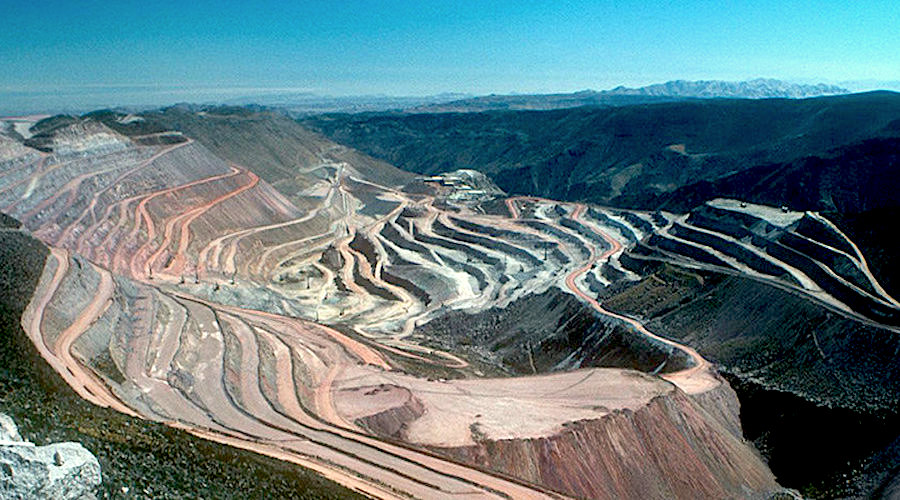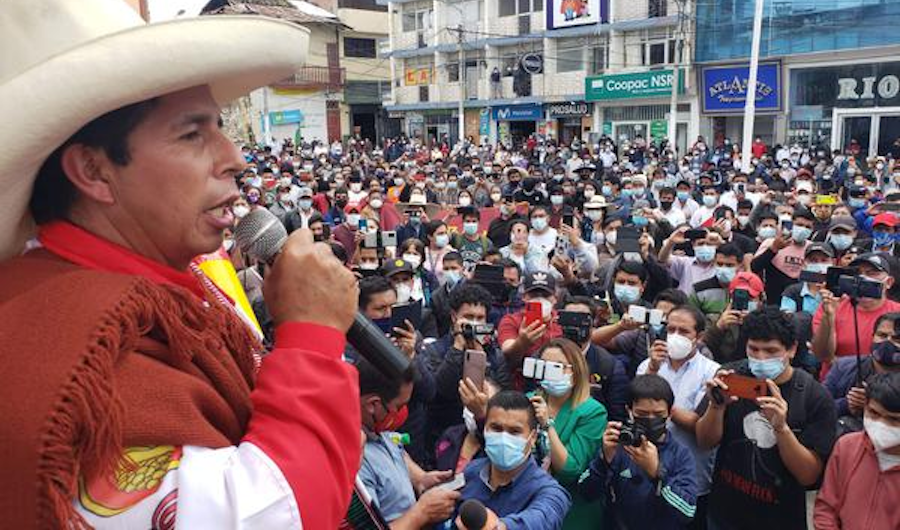Reuters | April 22, 2022 |

The vast Cuajone mine complex begins with a water supply at Lake Suche at 14,500 feet in the Andes and ends with a smelter on the South Pacific coast. (Image courtesy of Fluor.)
Peru said on Friday a group of indigenous communities had lifted a protest against Southern Copper Corp’s Cuajone mine that had forced a suspension of production for more than 50 days.

The world’s No. 2 producer of copper, Peru had sent its army to restore mine operations, dismissing as “irrational” the financial demands of nearby residents.
Southern Copper has yet to say if it will restart production after the protest suspension.
Unrest spread later to MMG’s giant Las Bambas mine, Peru’s fourth-largest copper mine and the world’s ninth-largest, which has been shut and reopened at least twice this year. The latest suspension was announced this week after residents of the nearby Fuerabamba community entered the mine and set up camp inside of it.
Glencore’s Antapaccay, Peru’s sixth largest copper mine, has also been the target of demonstrators this week, according to local media.
Peru, the world’s second largest producer after Chile, is also a significant silver and zinc supplier.
The mines affected by this week’s protest produced almost 500,000 of copper combined in 2021, with Las Bambas churning out 300,000 tonnes of copper Cuajone another 170,000 tonnes.
(By Marcelo Rochabrun; Editing by Clarence Fernandez)
Fifth of Peru copper mining goes offline with more shutdowns likely
Bloomberg News | April 20, 2022 |

Pedro Castillo. (Image from Castillo’s Twitter profile)
Sky-high metal prices and accelerating general inflation are fueling another up-tick in resource nationalism and social unrest in Peru, among the top suppliers of copper, zinc and silver.

As of Wednesday, about a fifth of the country’s copper output will be off-line as MMG Ltd’s Las Bambas mine joins Southern Copper Corp.’s Cuajone in succumbing to community protests. At the same time, unions in the mineral-rich Cusco region are staging strikes against rising prices, while residents near a Glencore Plc copper mine are preparing to resume protests.
To be sure, community conflicts are nothing new in Peru and some of the current unrest is more about protecting water supplies than grabbing a bigger share of the mineral spoils.
But having more than one major copper mine down at any one time is unusual, and this time round the mining protests are embedded in more generalized unrest over living costs that has inflamed an already tense political climate under President Pedro Castillo. Since the former rural activist from a Marxist party took office, the number of social conflicts is up about 7%.
With lawmakers discussing measures to appease the population’s pain from the fastest inflation in 24 years, politicians are looking to the mining industry to help foot the bill.
On Tuesday, Pedro Francke, a former Castillo finance minister and moderate left-winger, said more than a $1 billion could be added to state coffers with a modest hike to mining taxes. Others have tapped into the tensions to rekindle calls for more drastic measures. “The nationalization of strategic resources is the cornerstone of a country’s development,” Vladimir Cerron, founder of Castillo’s own party, wrote in a Twitter post.
The president, who has dodged two impeachment attempts since taking office in July, is being criticized by both the mining industry and some community groups.
Southern Peru Chief Financial Officer Raul Jacob said this week that dialog at Cuajone hadn’t advanced much amid “certain passivity” by the government to resolve conflicts.
The industry puts some of the blame for an up-tick in unrest on the administration’s prioritizing the right to protest over other concerns such as free transit. In isolated areas with poor services and infrastructure, mines can become de facto local governments and therefore an easy target for grievances.
But Castillo is having to walk a tight-rope. After softening his tone on resource nationalism to appease more moderate factions, he’s grappled to maintain support of his party’s more hardline factions and the rural voters who put him in power.
Carlos Hanco, youth secretary of the National Coordinator of Gas Users in Cusco, is among leaders pushing for a review of contracts covering natural gas, minerals and water. His grievances are directed both at the government and legislators.
“It is a demand for the Castillo government to fulfill the campaign promises,” Hanco said. “We also demand Congress stop being a coup plotter and work for the needs of the people.”
(By María Cervantes and James Attwood)

Pedro Castillo. (Image from Castillo’s Twitter profile)
Sky-high metal prices and accelerating general inflation are fueling another up-tick in resource nationalism and social unrest in Peru, among the top suppliers of copper, zinc and silver.

As of Wednesday, about a fifth of the country’s copper output will be off-line as MMG Ltd’s Las Bambas mine joins Southern Copper Corp.’s Cuajone in succumbing to community protests. At the same time, unions in the mineral-rich Cusco region are staging strikes against rising prices, while residents near a Glencore Plc copper mine are preparing to resume protests.
To be sure, community conflicts are nothing new in Peru and some of the current unrest is more about protecting water supplies than grabbing a bigger share of the mineral spoils.
But having more than one major copper mine down at any one time is unusual, and this time round the mining protests are embedded in more generalized unrest over living costs that has inflamed an already tense political climate under President Pedro Castillo. Since the former rural activist from a Marxist party took office, the number of social conflicts is up about 7%.
With lawmakers discussing measures to appease the population’s pain from the fastest inflation in 24 years, politicians are looking to the mining industry to help foot the bill.
On Tuesday, Pedro Francke, a former Castillo finance minister and moderate left-winger, said more than a $1 billion could be added to state coffers with a modest hike to mining taxes. Others have tapped into the tensions to rekindle calls for more drastic measures. “The nationalization of strategic resources is the cornerstone of a country’s development,” Vladimir Cerron, founder of Castillo’s own party, wrote in a Twitter post.
The president, who has dodged two impeachment attempts since taking office in July, is being criticized by both the mining industry and some community groups.
Southern Peru Chief Financial Officer Raul Jacob said this week that dialog at Cuajone hadn’t advanced much amid “certain passivity” by the government to resolve conflicts.
The industry puts some of the blame for an up-tick in unrest on the administration’s prioritizing the right to protest over other concerns such as free transit. In isolated areas with poor services and infrastructure, mines can become de facto local governments and therefore an easy target for grievances.
But Castillo is having to walk a tight-rope. After softening his tone on resource nationalism to appease more moderate factions, he’s grappled to maintain support of his party’s more hardline factions and the rural voters who put him in power.
Carlos Hanco, youth secretary of the National Coordinator of Gas Users in Cusco, is among leaders pushing for a review of contracts covering natural gas, minerals and water. His grievances are directed both at the government and legislators.
“It is a demand for the Castillo government to fulfill the campaign promises,” Hanco said. “We also demand Congress stop being a coup plotter and work for the needs of the people.”
(By María Cervantes and James Attwood)
No comments:
Post a Comment